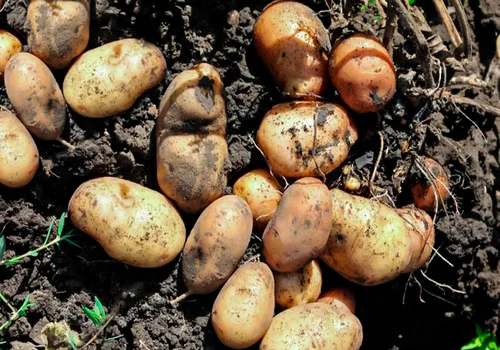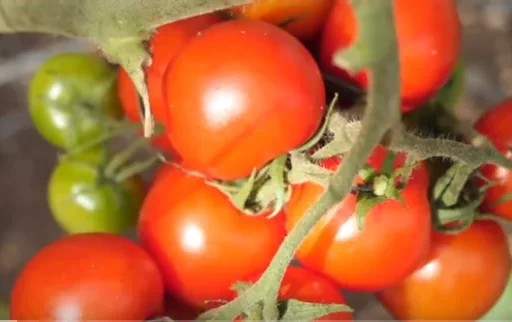Growing sweet potatoes can be incredibly rewarding, especially in hot and humid climates like the Southeastern coast of North Carolina. With the right techniques, you can achieve a bountiful harvest, even if you’ve struggled with root development in the past. Here, we’ll explore five key tips that can significantly improve your sweet potato yields, as well as some important considerations for ensuring your plants thrive.
Tip 1: Containers vs. Soil
One of the first decisions you need to make when growing sweet potatoes is whether to plant them in the ground or in containers. Sweet potatoes can be sensitive to over-fertilization, especially with nitrogen, which promotes vine growth over root development. In rich, fertile soil, you may end up with lush, sprawling vines but fewer tubers.
For optimal results, many gardeners have found that growing sweet potatoes in containers—like fabric grow bags—yields better results. These bags allow for better drainage, flushing out excess nutrients and creating a more suitable environment for tuber development. If your garden soil is nutrient-rich, consider switching to containers to maximize your harvest.
Tip 2: Ideal Soil Mix

When growing sweet potatoes in containers, the soil mix is critical. Too much organic matter, such as compost, can inhibit tuber growth. Instead, aim for a sandy, well-drained soil mix that mimics the conditions in which sweet potatoes thrive. A great mix includes peat moss for moisture retention, play sand for drainage, and a small amount of topsoil and compost for nutrients.
This low-nitrogen environment helps the plant focus on developing roots instead of excessive vines. If you’re using raised beds, you may still need to amend your soil with more sand or other low-nutrient materials to prevent over-fertilization.
Tip 3: Pre-rooting Sweet Potato Slips
Pre-rooting your sweet potato slips before planting can significantly speed up their establishment in the garden. Sweet potato slips are vines that sprout from mature sweet potatoes, and pre-rooting them in water can lead to quicker and stronger growth once they’re transplanted into the soil.
Cut your slips into sections, each with a node capable of rooting, and place them in water for a few days. You’ll notice roots forming rapidly, allowing you to plant them with confidence. This method helps sweet potatoes develop a robust root system faster, ensuring a quicker and healthier start in the garden.
Tip 4: Fertilizing Sweet Potatoes Properly
Sweet potatoes are highly sensitive to nitrogen, which can lead to excessive vine growth at the expense of tuber development. To avoid this, use a balanced fertilizer with lower nitrogen levels. Over-fertilizing with nitrogen can result in beautiful green vines but small, underdeveloped roots. The goal is to provide just enough nutrients for the plant without encouraging too much vine growth.
An organic fertilizer with a focus on phosphorus and potassium will support root development while limiting vine overgrowth. Apply it sparingly throughout the growing season for the best results.
Tip 5: Regular Watering and Mulching
Sweet potatoes need consistent moisture to thrive, especially during the hot summer months. Water them deeply, making sure the soil stays moist but not waterlogged. In addition, applying mulch around the plants helps retain moisture, keep the soil cool, and prevent weeds from competing with your sweet potatoes.
A good mulch layer also protects the vines from direct sunlight and helps keep the soil temperature more consistent, promoting healthier root development.
Frequently Asked Questions
1. What is the best soil type for growing sweet potatoes?
Sweet potatoes prefer well-drained, sandy soil that is low in nitrogen but rich in organic matter like peat moss and compost.
2. Can sweet potatoes be grown in containers?
Yes, fabric grow bags are ideal for growing sweet potatoes. They allow for better drainage and prevent nutrient buildup, which can hinder root development.
3. How much water do sweet potatoes need?
Sweet potatoes require regular watering, especially in hot climates. Water them deeply to keep the soil consistently moist.
4. Do sweet potatoes need a lot of fertilizer?
Sweet potatoes should not be over-fertilized with nitrogen, as this encourages vine growth over tuber development. Use a balanced fertilizer with lower nitrogen levels.
5. Can sweet potato vines be eaten?
Yes, sweet potato vines are edible and can be used in salads or stir-fried, but the primary focus for most gardeners is growing the tubers.
6. How long do sweet potatoes take to grow?
Sweet potatoes typically need 4-5 months of warm weather to mature. They require temperatures above 60°F for optimal growth.
7. Why are my sweet potato vines growing but not the tubers?
Over-fertilization, particularly with nitrogen, can lead to excessive vine growth without proper root development. Adjust your soil or container mix for better results.



